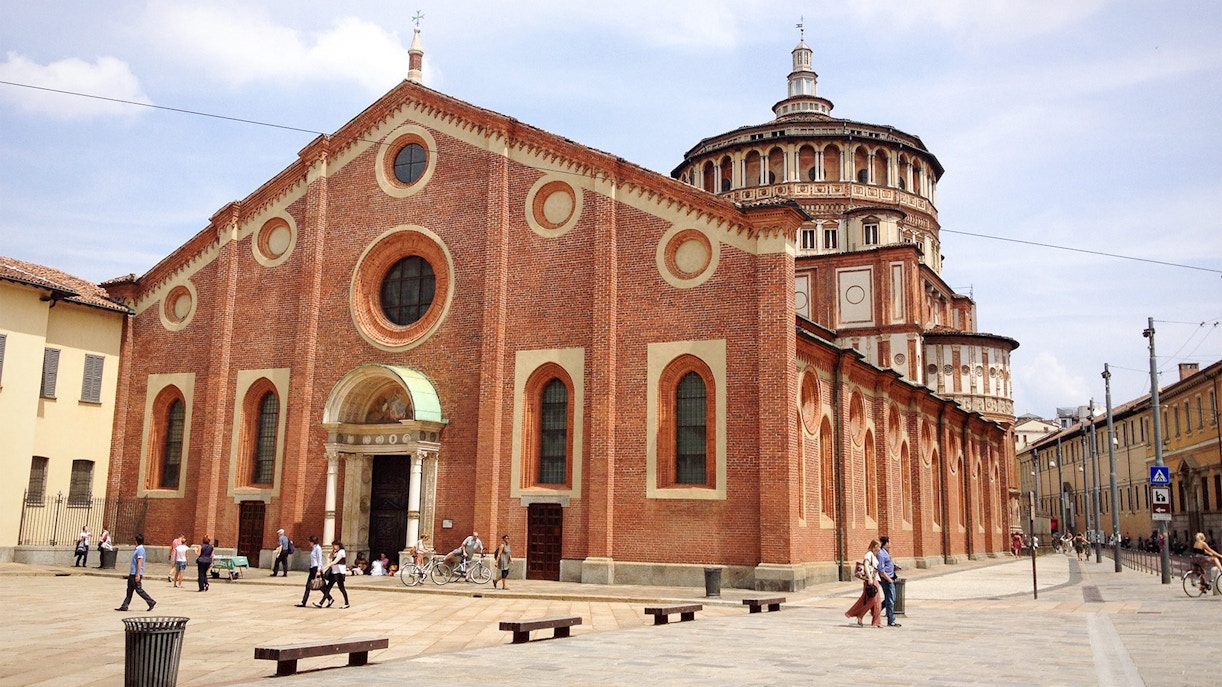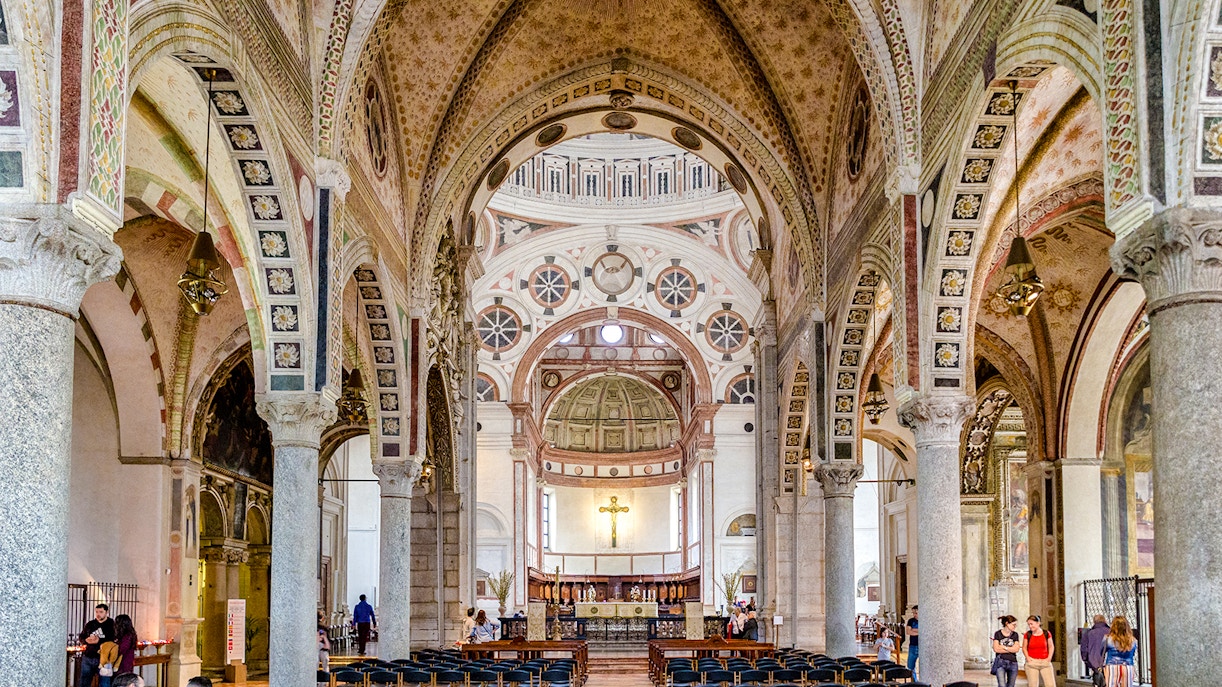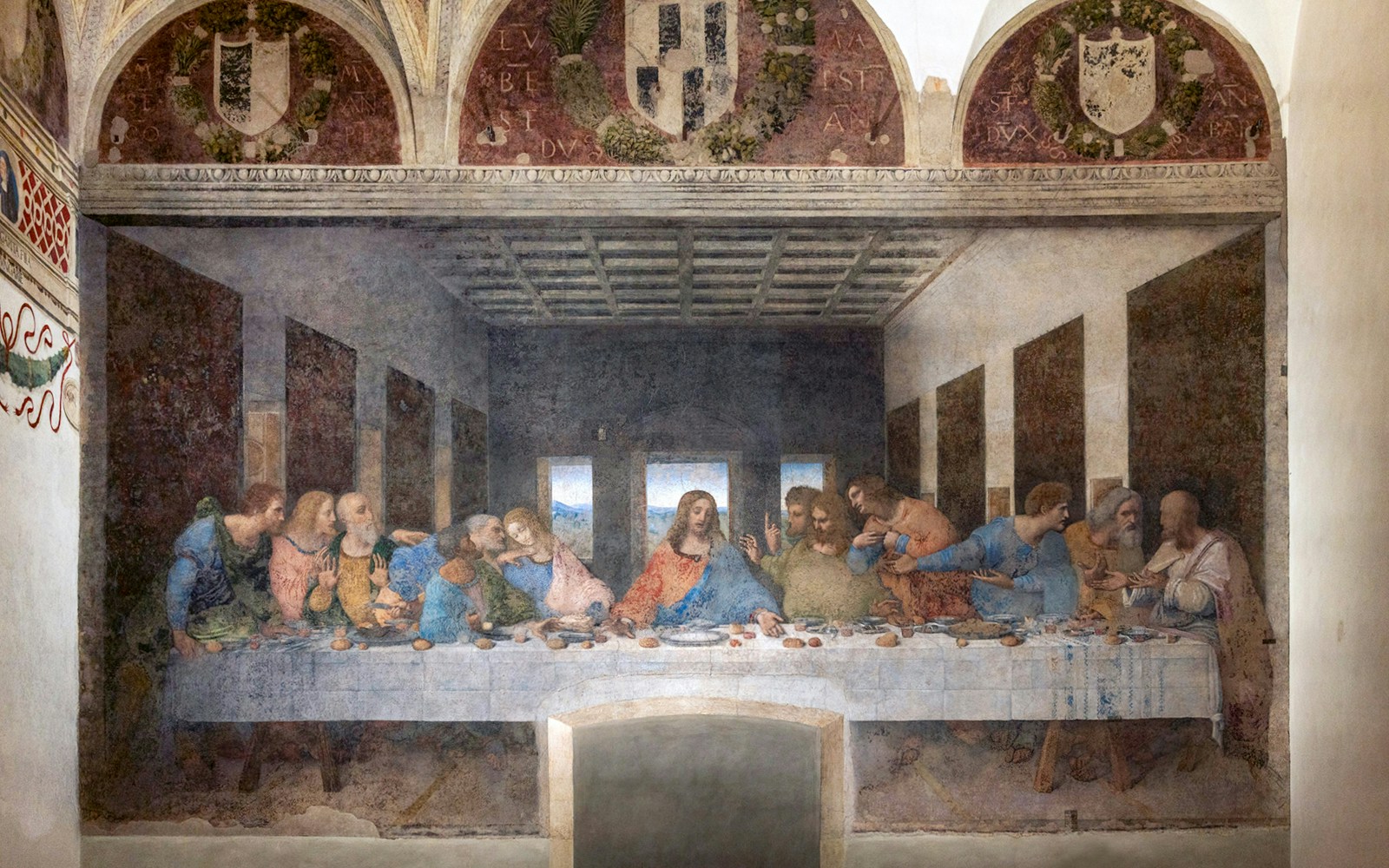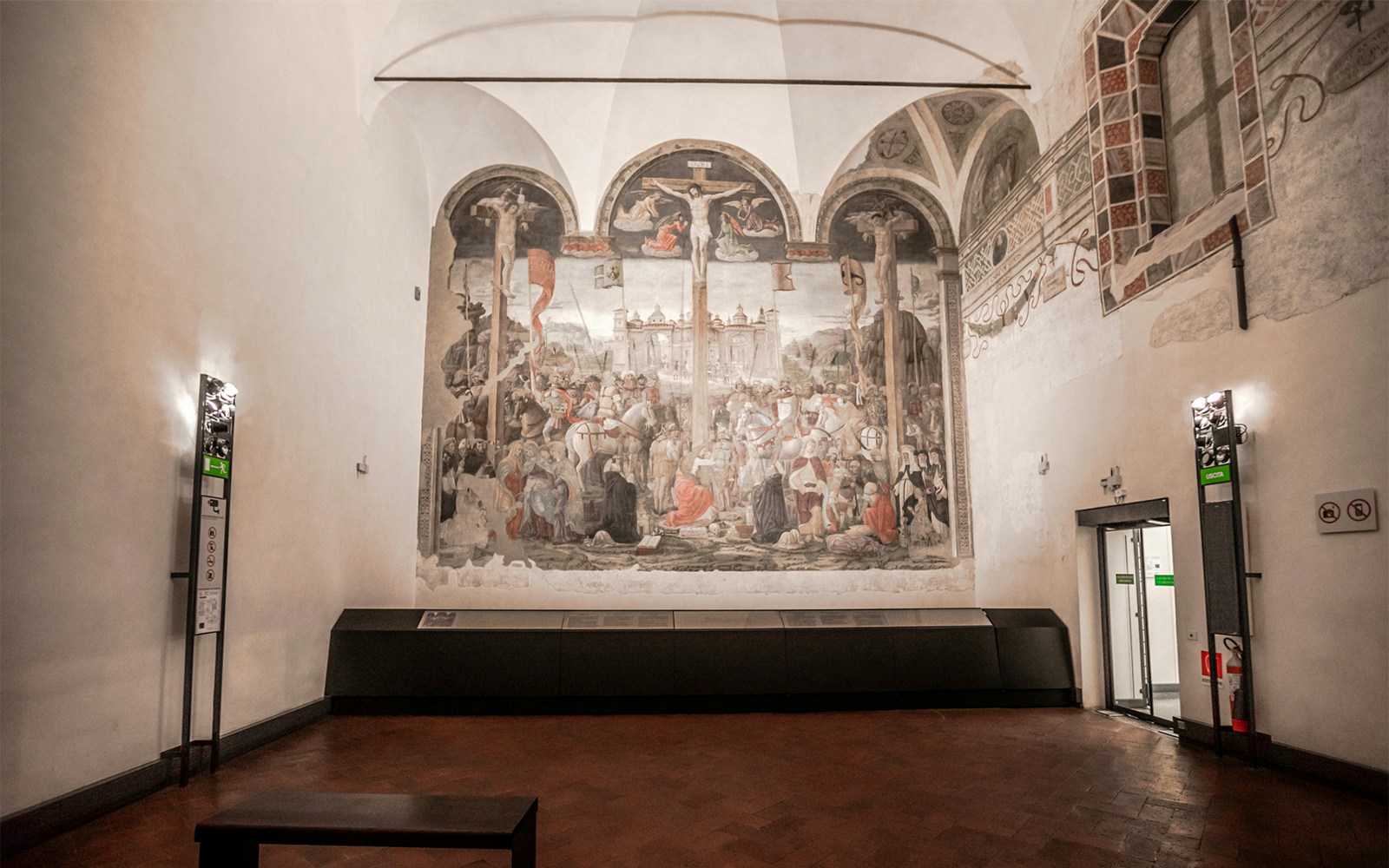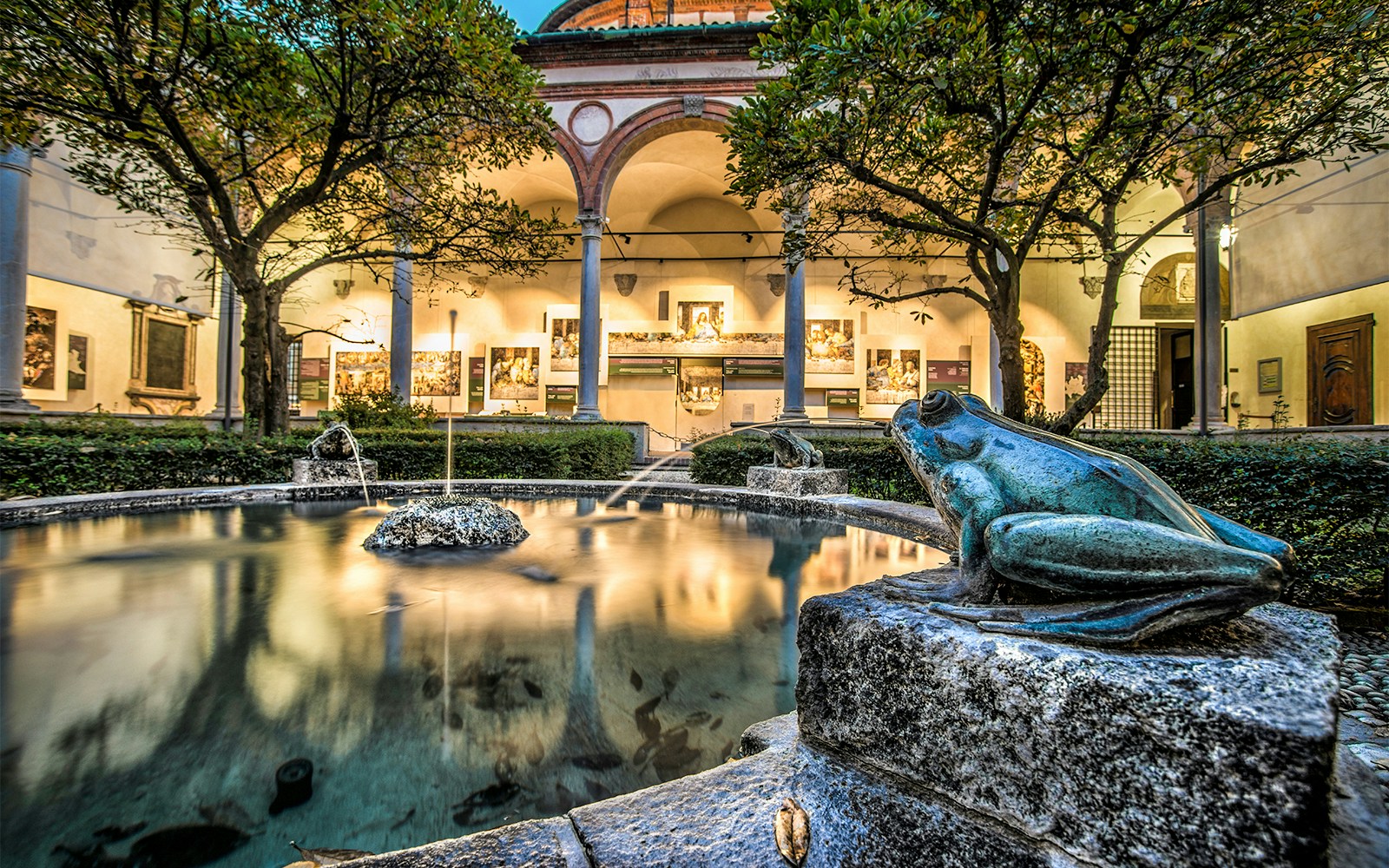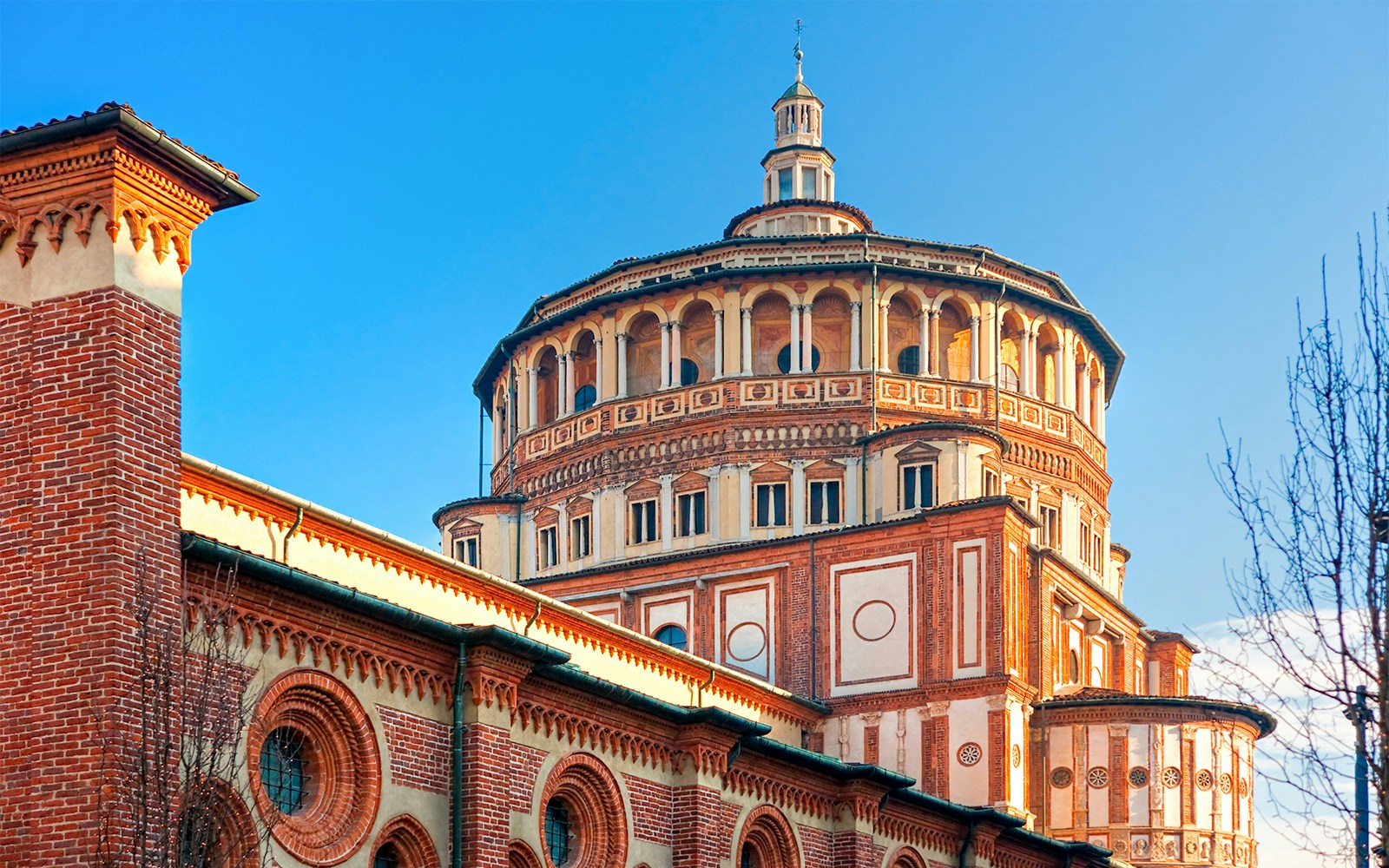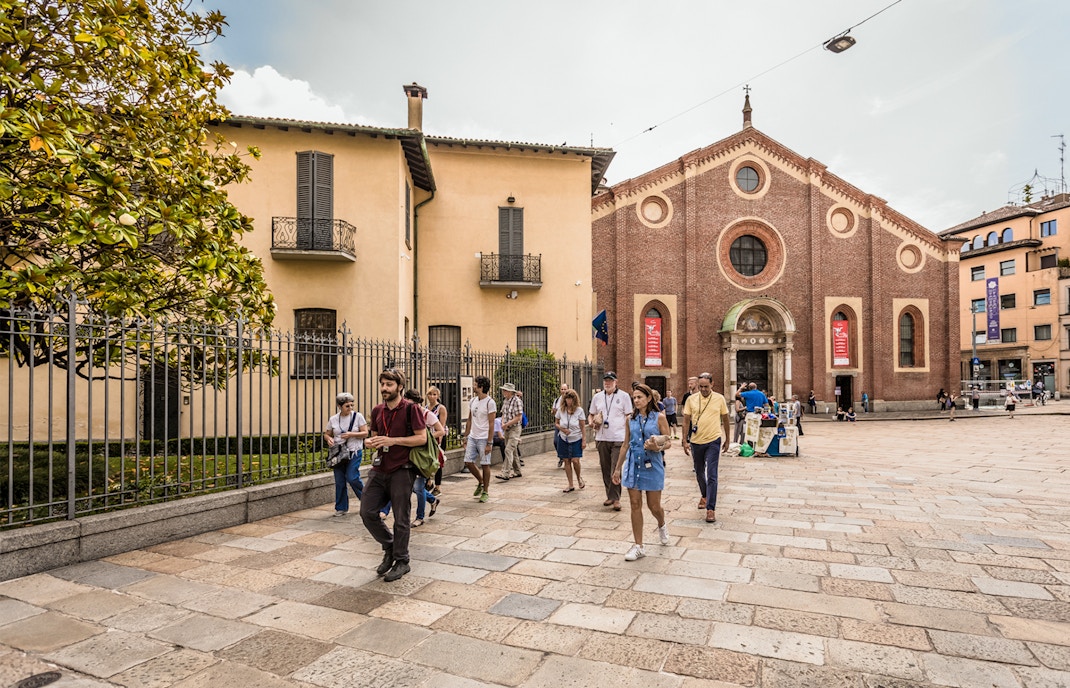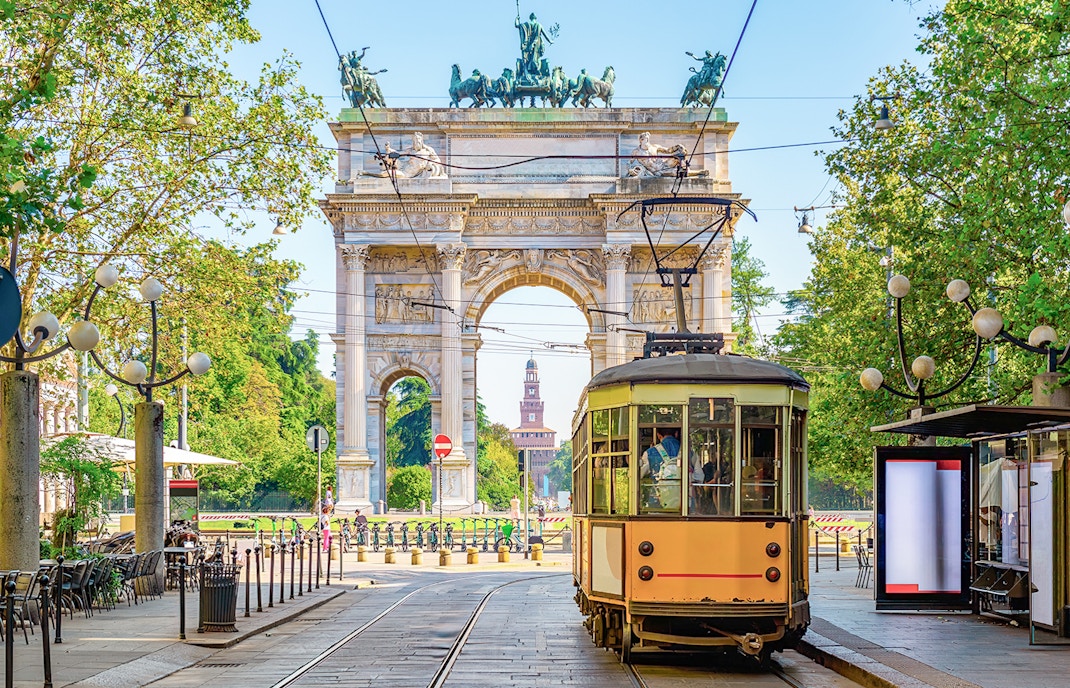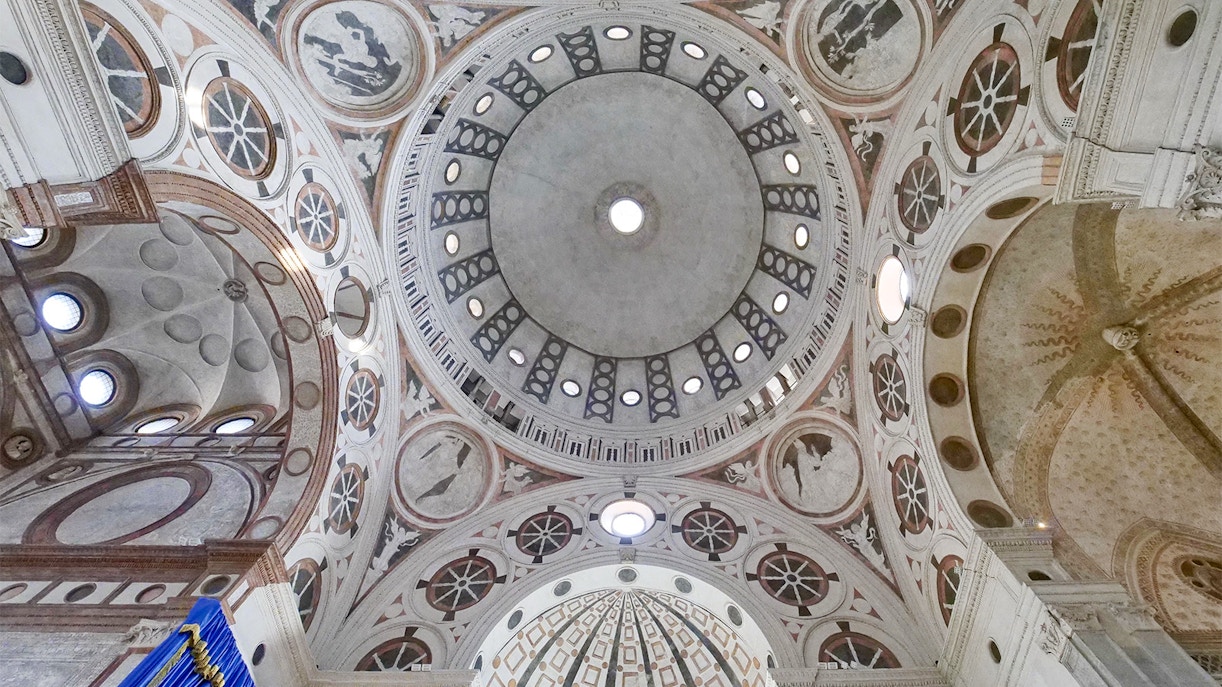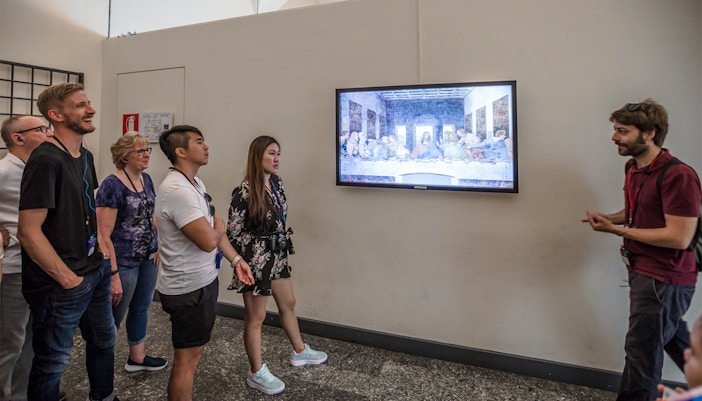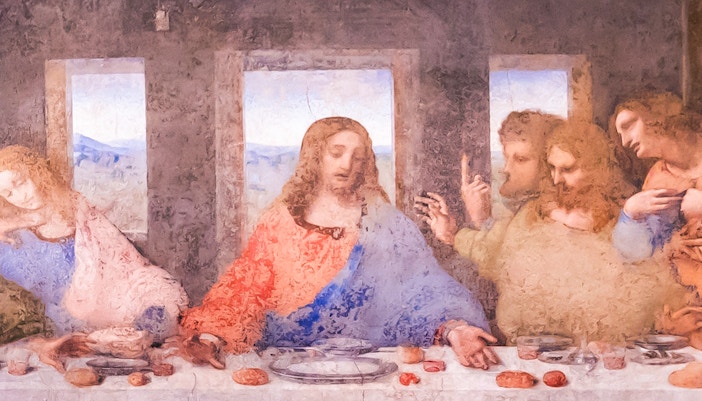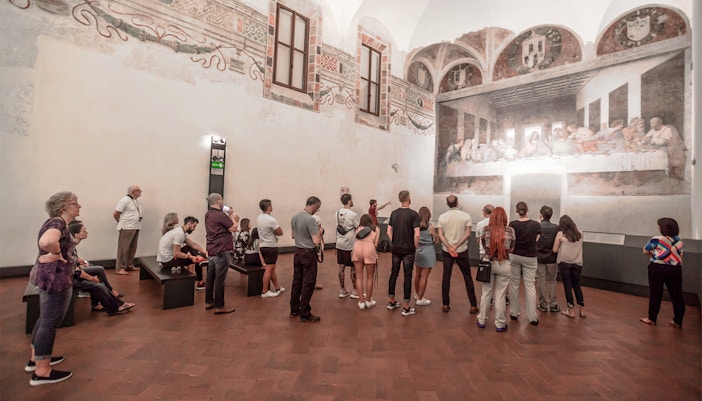- Official name: Santa Maria delle Grazie
- Address: Via Caradosso 1, 20123 Milan, Italy
- Type of attraction: Church and Dominican convent
- Timings: 9am - 12:20am, 3pm - 5:50pm (Monday - Saturday), 3pm - 5:50pm (Sundays and public holidays)
- Architect: Guiniforte Solari (original construction)
- Architectural style: Italian Gothic
- UNESCO World Heritage Site: Yes, since 1980 (as part of "The Last Supper, Santa Maria delle Grazie, and Leonardo da Vinci's Vineyard" World Heritage Site)
- Number of visitors per year: Approximately 1.2 million visitors annually
- Constructed in: Construction began in 1463 and continued for several decades.
Quick facts - Santa Maria Delle Grazie
